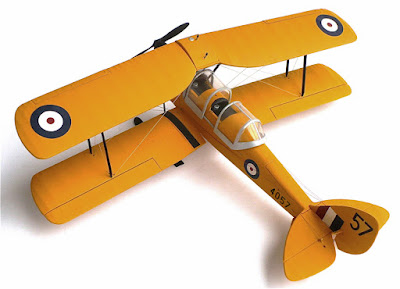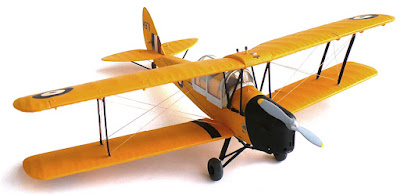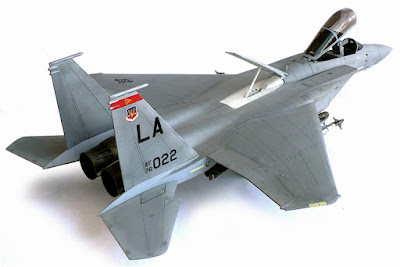From Wikipedia"
The Messerschmitt Bf 110, often (erroneously) called Me 110, was a twin-engine heavy fighter (Zerstörer - German for "Destroyer") in the service of the Luftwaffe during World War II. Hermann Göring was a proponent of the Bf 110, and nicknamed it his Eisenseiten ("Ironsides"). Development work on an improved type to replace the Bf 110, the Messerschmitt Me 210
began before the war started, but its teething troubles resulted in
the Bf 110 soldiering on until the end of the war in various roles,
alongside its replacements, the Me 210 and the Me 410.
The Bf 110 served with success in the early campaigns, the Polish, Norwegian and Battle of France. The Bf 110's lack of agility in the air was its primary weakness. This flaw was exposed during the Battle of Britain, when some Bf 110-equipped units were withdrawn from the battle after very heavy losses and redeployed as night fighters,
a role to which the aircraft was well suited. The Bf 110 enjoyed a
successful period following the Battle of Britain as an air superiority
fighter and strike aircraft in other theatres. During the Balkans Campaign, North African Campaign and on the Eastern Front, it rendered valuable ground support to the German Army as a potent fighter-bomber (Jagdbomber or Jabo). Later in the war, it was developed into a formidable night fighter, becoming the major night-fighting aircraft of the Luftwaffe. Most of the German night fighter aces flew the Bf 110 at some point during their combat careers, and the top night fighter ace of all time, Major Heinz-Wolfgang Schnaufer, flew it exclusively and claimed 121 victories in 164 combat missions.
Genesis and competition Throughout the 1930s, the air forces of the major military powers were engaged in a transition from biplane to monoplane designs. Most concentrated on the single-engine fighter aircraft. But the problem of range arose. The Reichsluftfahrtministerium (RLM), pushed by Hermann Göring, issued a request for a new multipurpose fighter called the Kampfzerstörer (battle destroyer) with long range and an internal bombload. The request called for a twin-engine, three-seat, all-metal monoplane that was armed with cannon as well as a bomb bay. Only Bayerische Flugzeugwerke (Messerschmitt), Focke-Wulf and Henschel responded of the original seven companies.
Messerschmitt defeated Focke-Wulf, Henschel and Arado, and was given the funds to build several prototype aircraft. The Focke-Wulf design, the Focke-Wulf Fw 57, had a wing span of some 25.6 m (84 ft) and was powered by two DB 600 engines. It was armed with two 20 mm MG FF cannons in the nose and a third was positioned in a dorsal turret. The Fw 57 V1 flew in 1936 but its performance was poor and the machine crashed.The Henschel Hs 124 was similar in construction layout to the Fw 57. Equipped with two Jumo 210C for the V1. The V2 utilized the BMW 132Dc radial engines generating 870 PS compared with the 640 PS Jumo. The armaments consisted of a single rearward-firing 7.92 mm (.312 in) MG 15 machine gun and a single forward-firing 20 mm MG FF cannon.
Messerschmitt
omitted the internal bomb load requirement from the RLM directive to
increase the armament element of the RLM specification. The Bf 110 was
far superior to its rivals in providing the speed, range and firepower
to meet its role requirements. By the end of 1935, the Bf 110 had evolved into an all-metal, low-wing cantilever monoplane of semi-monocoque design featuring twin rudders and powered by two DB 600A engines. The design was also fitted with Handley-Page wing slots.
Early variants
By luck (and pressure by Ernst Udet), RLM reconsidered the ideas of the Kampfzerstörer and began focussing on the Zerstörer.
Due to these changes, the Bayerische Flugzeugwerke design better
fitted RLM's requests. On 12 May 1936, Rudolf Opitz flew the first Bf
110 out of Augsburg.
But, as many pre-war designs found, the engine technologies promised
were not up to acceptable reliability standards. Even with the
temperamental DB 600 engines, the RLM found the Bf 110, while not as
maneuverable as desired, was quite a bit faster than its original
request specified, as well as faster than the then-current front line
fighter, the Bf 109 B-1. Thus the order for four pre-production A-0
units was placed. The first of these were delivered on January 1937.
During this testing, both the Focke-Wulf Fw 187 and Henschel Hs 124 competitors were rejected and the Bf 110 was ordered into full production.
The
initial deliveries of the Bf 110 encountered several issues with
delivery of the DB 600 motors, which forced Bayerische Flugzeugwerke to
install Junkers Jumo 210B
engines, leaving the Bf 110 seriously underpowered and able to reach a
top speed of only 431 km/h (268 mph). The armament of the A-0 units
was also limited to four nose-mounted 7.92 mm (.312 in) MG 17 machine guns.
Even
without delivery of the DB 600 engines, Bayerische Flugzeugwerke began
assembly of the Bf 110 in the summer of 1937. As the DB 600 engines
continued to have issues, Bayerische Flugzeugwerke was forced to keep
on using Jumo motors, the 210G, which supplied 515 kW (700 PS) each
(versus the 471 kW/640 PS supplied by the 210B). Three distinct
versions of the Bf 110B were built, the B-1, which featured four 7.92 mm
(.312 in) MG 17 machine guns and two 20 mm MG FF cannons. The B-2 reconnaissance version, which had a camera in place of the cannons, and the B-3 which was used as a trainer,
with the cannons replaced by extra radio equipment. Only 45 Bf 110Bs
were built before the Jumo 210G engine production line ended. The major
identifier of the A and B 110s was the very large "mouth" bath radiators located under the engine.
In
late 1938, the DB 601 B-1 engines finally became available. With the
new engine, the design teams removed the radiators under the engine and
replaced them with water/glycol radiators, placing them under the wing
to the outside of the engines. With the DB 601 engine, the Bf 110's
maximum speed increased to a respectable 541 km/h (336 mph) with a
range of approximately 1,094 km (680 mi).
- Bf 110 C-7
- Fighter-bomber based on C-4/B, two ETC-500 centerline bomb racks capable of carrying two 500 kg (1,100 lb) bombs, uprated DB 601P engines.

























































